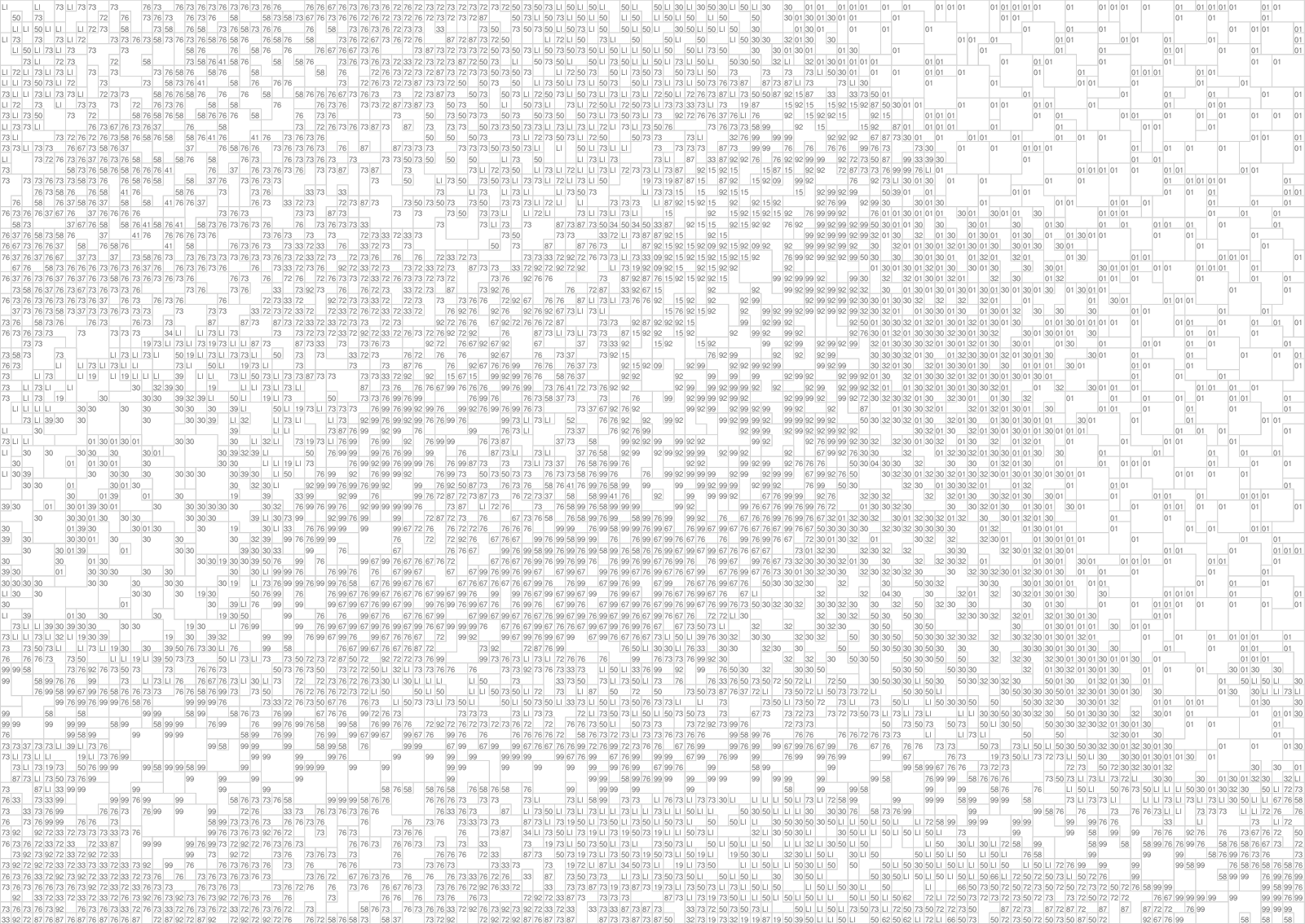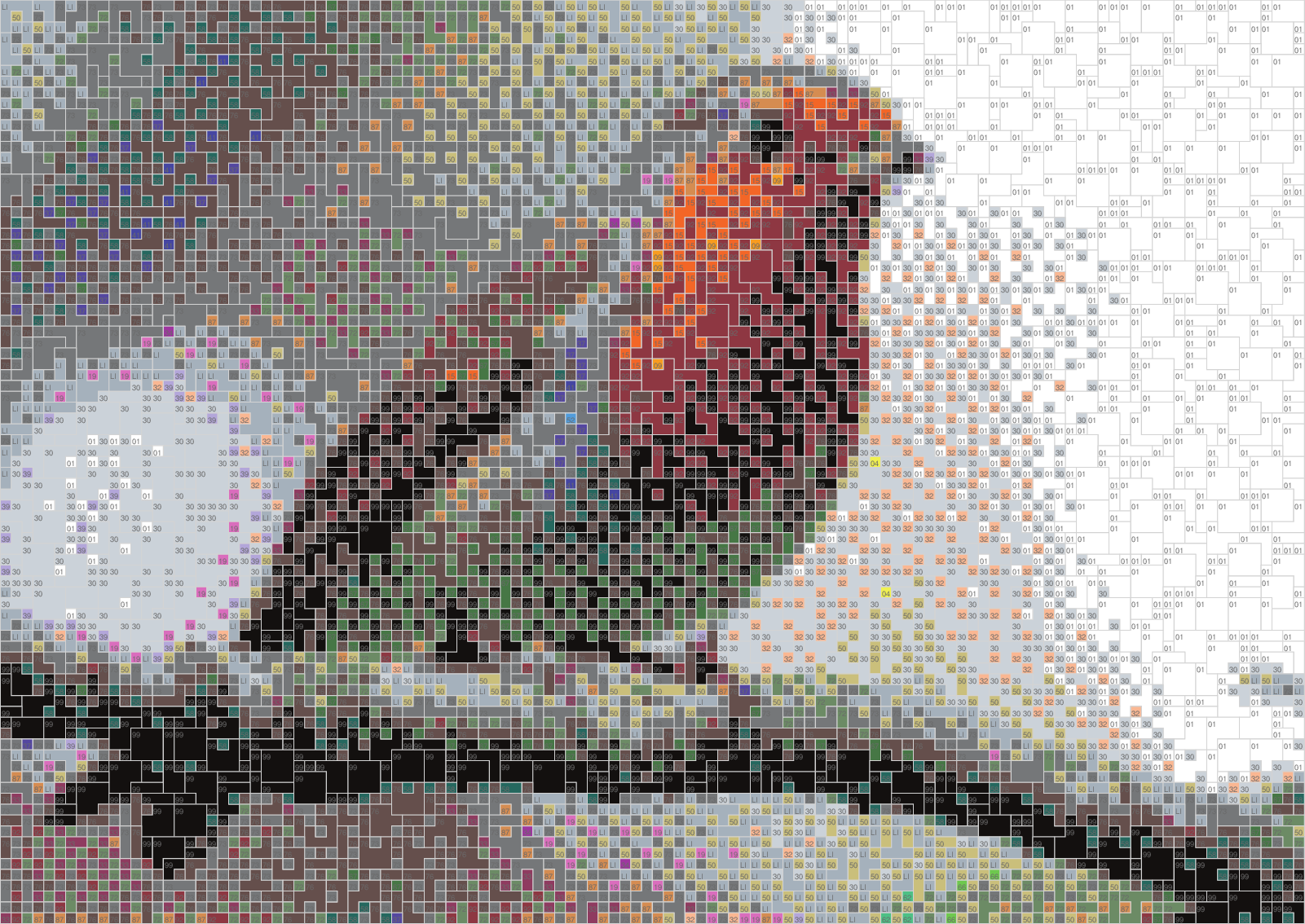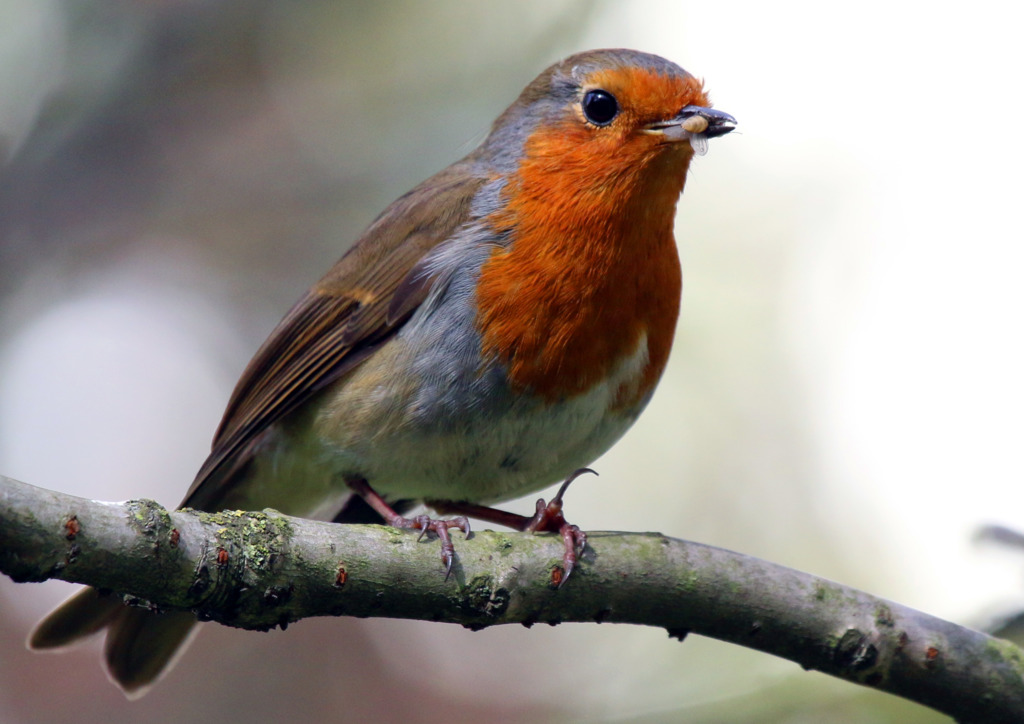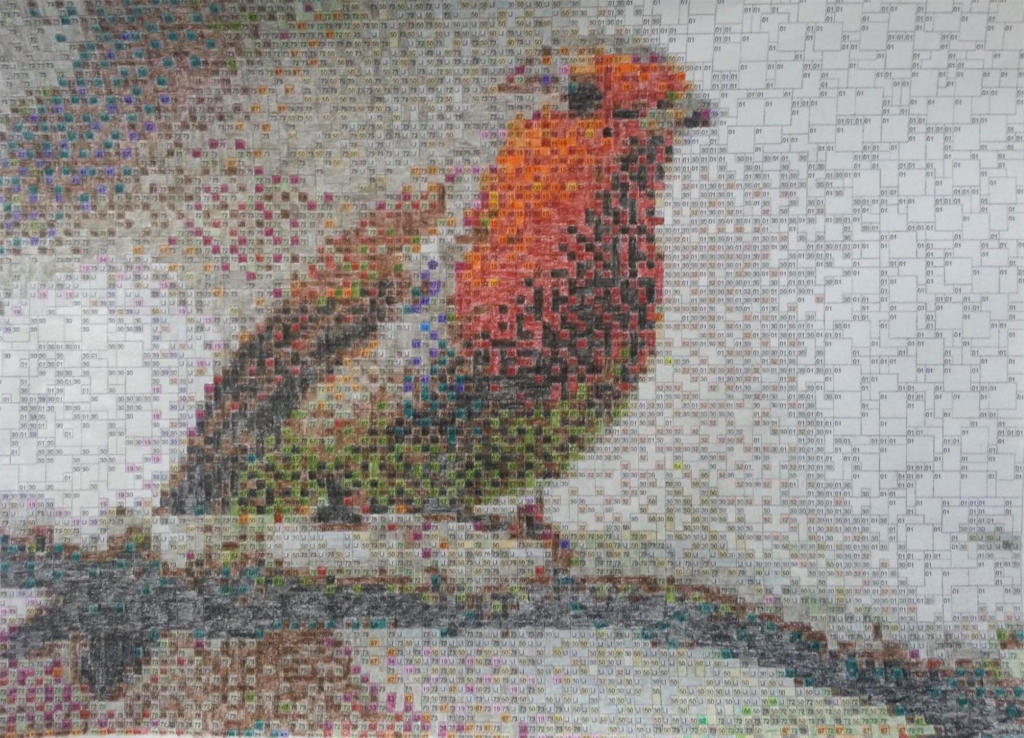Create pixel-art like coloring pages from any pictures.
This program allows to create coloring pages with a pixel-art look from any picture supported by G'MIC.
The low-resolution 'pixel-art' picture is obtained with G'MIC, using a ministeck-inspired procedure. The colors used to map the picture are provided by the user.
The colors used to index the coloring page are extracted from the palette file. This file must have two columns, separated by a blank character (tab or space). The first column contains the RGB code of the color as a 6-digit hexadecimal number (web-like formatted, without the leading #). The second column contains a color identifier, printed on the pixel-art picture. Works best if the identifier is made of one or two caracters.
art_grip_aquarelle_36.csv is an example for the Art GRIP Aquerelle 36 pencil
box from Faber-Castell (see
here). The RGB values were
extracted from the pdf palette and may not reflect the real color of every
pencil... The last two numbers printed on each pencil are used as the color
code.
- G'MIC as a library. You may have to modify the provided pro file if qmake doesn't find it.
- CImg (it's a build-time dependency of G'MIC)
- Qt version 5 is supported, 6 may be compatible but not tested.
- pkg-config, used to resolve gmic libX11 dependency.
This has only be tested on Linux/x86_64. May run on other systems with the requirements above.
- If required, edit the qmake project file:
any2col.pro qmakemake
any2coloring -i input_picture.jpg -o output_picture.pdf -p palette.csv
any2coloring -i input_picture.jpg -s -o output_picture_soluce.pdf -p palette.csv
Unless specified, sizes are given in millimeters.
| Flag | Long Option | Argument | Description |
|---|---|---|---|
| -h | --help | none | print help and exits |
| -v | --version | none | print software version and exits |
| -p | --palette | palette.csv | file providing the colors used to index the pixel-art picture (mandatory option) |
| -i | --input | input.png | input file, can be any picture supported by CImg/G'MIC. If the file contains multiple pictures, like animated gif, only the first one is processed. (mandatory option) |
| -o | --output | output.pdf | output coloring as a PDF file |
| -k | --text-color | color | text color, expects an integer value from 0 to 255, rendered gray |
| -g | --line-color | color | line color, expects an integer value from 0 to 255, rendered gray |
| -x | --pixel-size | pixel size | the size of one pixel, as rendered on the pdf file |
| -w | --page-width | page width | defaults to A4 width (210 mm) |
| -f | --page-height | page height | defaults to A4 height (297 mm) |
| -t | --margin-top | top margin | minimal top margin, defaults to 5 mm. May be larger due to input file geometry |
| -b | --margin-bottom | bottom margin | minimal bottom margin, defaults to 5 mm. May be larger due to input file geometry |
| -l | --margin-left | left margin | minimal left margin, defaults to 5 mm. May be larger due to input file geometry |
| -r | --margin-right | right margin | minimal right margin, defaults to 5 mm. May be larger due to input file geometry |
| -c | --color-output | none | colored output (color labels are replaced by the color they actually represents) |
Some parameters are hard-coded and may only be changed by recompiling the program. This includes:
- the thickness of the grid;
- the size of the text;
- the font.
European robin, picture adapted from mediawiki (Author: Charlesjsharp, license: CC BY-SA 3.0)
| Coloring page | Answer |
|---|---|
 |
 |
(Both picture under license CC BY-SA 3.0)
(Picture under license CC BY-SA 3.0)

